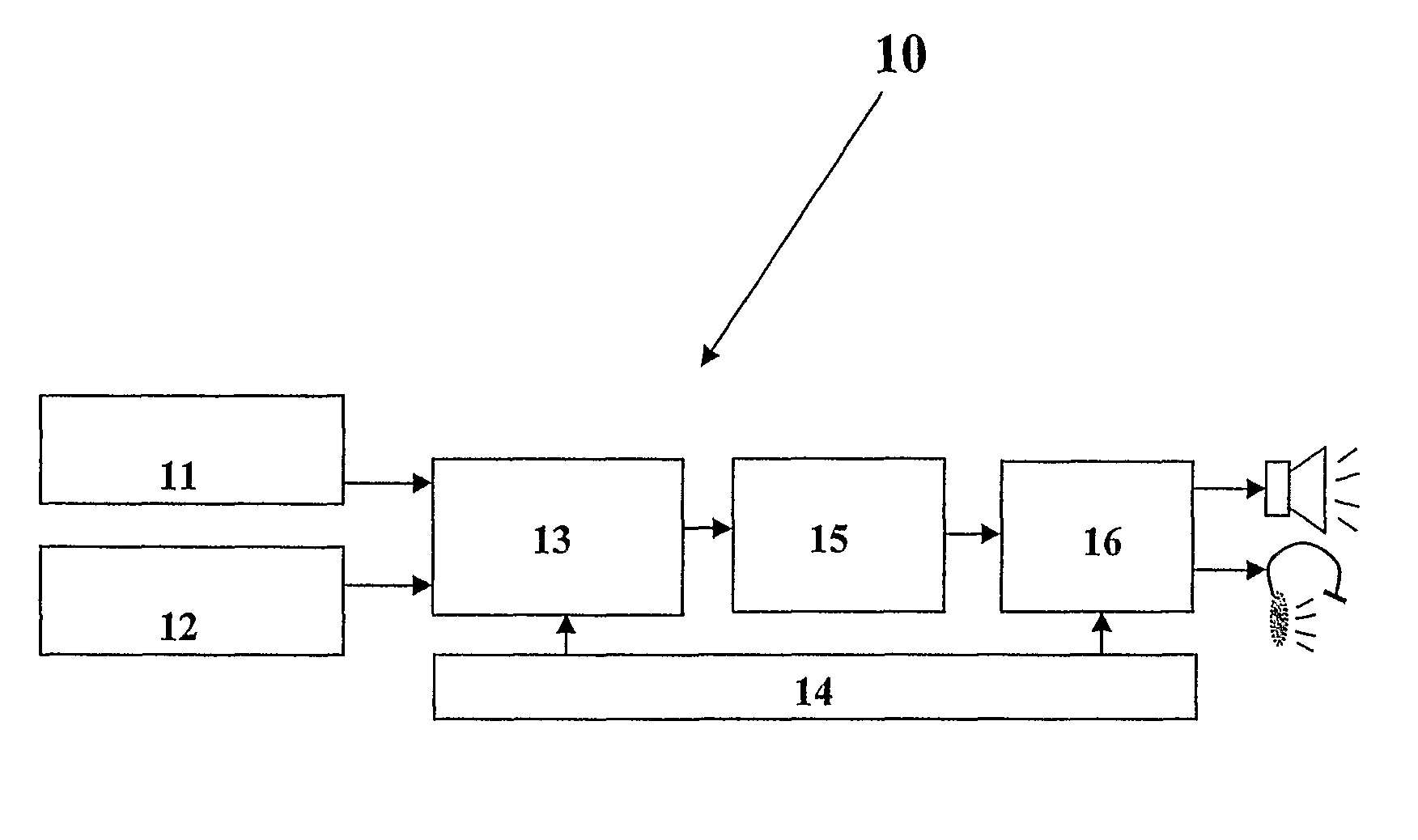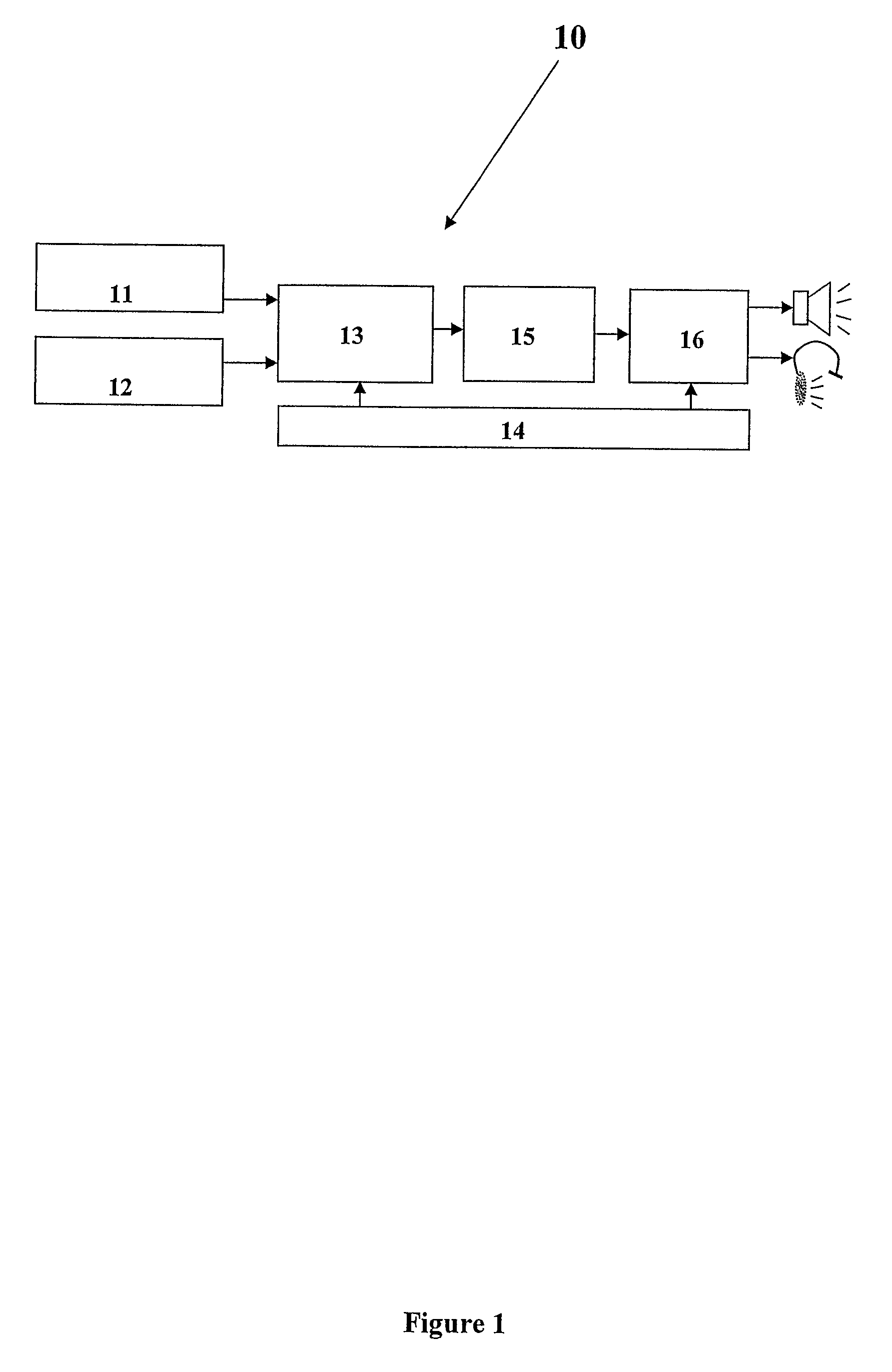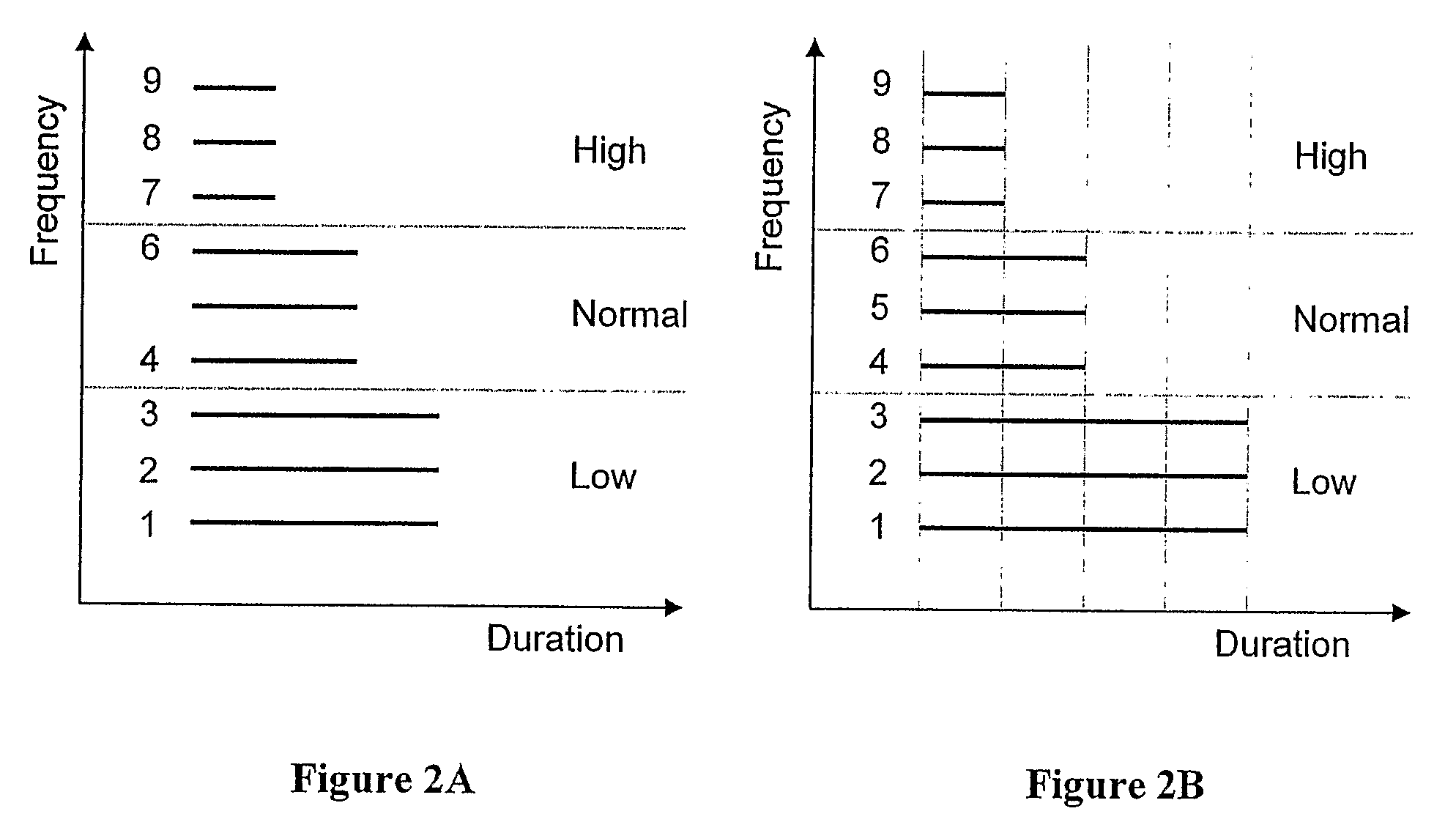Method and apparatus for physiological monitoring
a physiological monitoring and blood pressure technology, applied in the field of physiological monitoring, can solve the problems of difficult interpretation of the different measurements of blood pressure in relation to other physiological parameters, unable to obtain meaningful readings, and unable to meet the needs of patients, etc., to achieve a ready aural comparison
- Summary
- Abstract
- Description
- Claims
- Application Information
AI Technical Summary
Benefits of technology
Problems solved by technology
Method used
Image
Examples
example 1
Comparison of Earcon Constructs for Intermittent Information
[0065]The first study addressed issues related to H1 to H14. From a comparison between three of the possible earcons, it was sought to establish that historical information and the static beacon would assist participants' awareness of the simulated patient's blood pressure.
[0066]The first experiment compared three versions of the earcons under a dual task condition. Participants monitored a simulated patient while conducting a basic but cognitively demanding arithmetic task [9].
[0067]A within-subject experiment was conducted with three independent variables. The first variable was earcon type. The first earcon provided information about the current systolic and diastolic blood pressure measurements (referred to as C); a second earcon contained the beacon followed by the current systolic and diastolic blood pressure measurements (referred to as BC); a third earcon contained the beacon followed by the previous historical bloo...
example 2
Comparison of Earcon Constructs for Intermittent Information
[0080]The second experiment addressed issues related to H1, H2, H4 and H5. From a comparison between three of the possible earcons, it was sought to establish that historical information and an auditory alert would assist participants' awareness of the simulated patient's blood pressure. The auditory alert occurred at the same time interval before the systolic information of the earcons as did the beacon in the first experiment; however, the alert was significantly different in pitch, duration and rhythm so it could not be used as a beacon. If the beacon served only to alert participants to reorient their attention from the arithmetic task to the earcon then similar results to the first experiment should have been observed.
[0081]The second experiment was a within-subject experiment conducted with three independent variables. The first variable was earcon type. The first earcon provided information about the current systolic...
PUM
 Login to View More
Login to View More Abstract
Description
Claims
Application Information
 Login to View More
Login to View More - R&D
- Intellectual Property
- Life Sciences
- Materials
- Tech Scout
- Unparalleled Data Quality
- Higher Quality Content
- 60% Fewer Hallucinations
Browse by: Latest US Patents, China's latest patents, Technical Efficacy Thesaurus, Application Domain, Technology Topic, Popular Technical Reports.
© 2025 PatSnap. All rights reserved.Legal|Privacy policy|Modern Slavery Act Transparency Statement|Sitemap|About US| Contact US: help@patsnap.com



